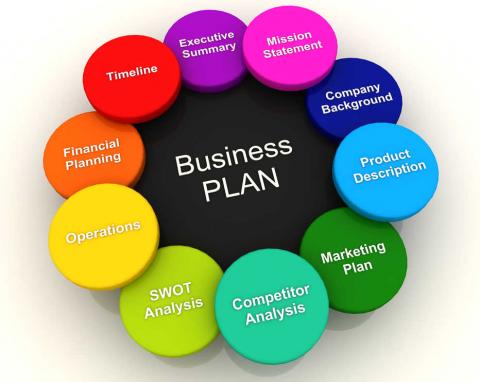Creating a Business Plan: Why it Matters and Where to Start
Your business plan sets your business apart from the competition. It’s a clear sign to lenders and investors that you’re taking your initiative seriously and that you are prepared for whatever lies ahead. It’s also a roadmap for you to follow when things don’t go according to your plan, or when you find yourself pulled in a different direction than you started with. This means that your business may very well depend upon the strength of your initial plan; because of this, it should be taken seriously.
If you’re ready to put together a business plan, consider the following essential elements of a solid plan and start to put it all together. Remember that not all of the parts below will apply to every business because every business is different. Instead, start with what you can, then, build over time.
Executive Summary
The executive summary is the “overview” of your business and your plan. It gives readers the opportunity to gain a bird’s eye view of your business and to familiarize them with your ideas. It’s the first place to attract attention.
Your executive summary should include:
- A mission and vision statement. What do you hope to accomplish going forward?
- General company information: what you do, what you offer, your target location, and your overall setup.
- A general look at your products and services.
- Financing needs and information.
- Future plans. Where do you hope to go in one year? In five? In ten?
Company Description
This is your opportunity to decide upon and describe various elements of your business as a company. Consider it your elevator pitch. Include the nature of your business and your target customers, the needs that your business meets and what competitive advantage and/or value you bring to the market place.
A Detailed Market Analysis
This is your opportunity to show that you’ve completed the necessary research on your market and are ready to proceed. Your market analysis should include:
- Who are your target customers? What are their needs? Are those needs currently being met or do you bring something new to the table? What are their purchasing trends and financial situations?
- How large is your target market? Are they located in a specific region or location? How will you reach them?
- What percentage of your target market can you reasonably reach? How did you come up with this number?
- What is your pricing structure? How does this suit your target market?
- Who is your competition? Where are they located? What is their market share? What are their strengths and weaknesses?
- What are your own strengths and weaknesses? How can you improve upon your weaknesses?
Your Organizational Structure
Where are you starting as far as your company’s structure and how will you expand upon it?
Start with a current chart that lists employees, investors and owners, then create a future growth chart that shows how you will expand going forward. From there, include bios for all owners and managers, along with critical information that relates to each of them. This adds depth to your business and your plan.
Service and Product Descriptions
What are you selling? Create a list of all products and/or services along with distinguishable features. From there, discuss how you will expand going forward. Be sure to list any patents or trademarks that are pending or in place along with any other critical information.
Marketing
How do you plan to reach and convert customers? How will you make your business a success? It all comes down to your marketing plan.
Your strategy should include:
- How you’ll penetrate your market. Which channels will you use?
- How you’ll grow when marketing is successful. Is franchising an option? Purchasing another business? Product expansion?
- Your channels of distribution: will you simply market in-house products? Or, will you engage a sales force, other retailers or distributors?
- What combination of communication tactics will you put into action? Traditional advertising? Social media? Printed materials? Trade shows? Seasonal catalogs?
Financial Needs
This is the section to outline all financial needs and funding requests, if applicable. Be specific and outline what you need and how it will be used.
Financial Projection
After you’ve taken the time to evaluate your market and to consider the objectives of your company, you should be able to compile a financial projection. This outlines what you’re hoping to accomplish financially in the next 5 years. If you have historical data to base you projections upon, this is the best place to start. If you’re a start up, consider your products and growth plan against initial funding needs.
Appendix (optional)
An appendix is not a necessary aspect of a business plan. However, it’s an excellent location for the inclusion of miscellaneous documents like business permits, patents, photos of products, any research documents or references used to gather data and information, credit histories and contracts.
A business plan is critical for all businesses. As such, it should not be taken lightly. Any program that promises a solid plan in a few hours is probably not as detailed as it should be. If you’re looking for ways to create or to improve upon your business plan, start by speaking with an experienced business law attorney, like Michael Hynum of Hynum Law.
A business plan can make or break a business, it’s important to take it seriously from the start. Ready to get started? Contact us today; we look forward to working with you.

